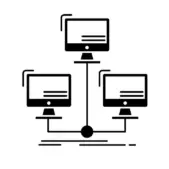If you’ve ever worked on a project for an extended period, you’ve likely experienced confirmation bias. Originally coined by psychologist Peter Wason, confirmation bias refers to our natural tendency to seek out information that supports our existing beliefs, often without realizing it.
In UX research, confirmation bias can skew how we gather, interpret, and act on user insights. Even well-intentioned research can be unintentionally influenced, leading teams to overlook critical problems or opportunities for improvement.
Understanding and combating confirmation bias is key to building better, more user-centered experiences. Here’s how to recognize it and how modern UX practices can help minimize its impact.

How Confirmation Bias Affects User Research
Confirmation bias tends to surface when teams are deeply invested in a product or solution.
Consider this example:
You’re redesigning a website. Early in the project, you survey users about their needs for the new homepage. After launch, you gather feedback and analytics. Most users seem satisfied, but several mention struggling to locate contact information.
Given your time, effort, and emotional investment, it’s easy to downplay the criticism. You might assume users simply need time to adjust. But ignoring these signals risks missing a real UX flaw that could affect engagement, satisfaction, and conversions.
Confirmation bias often leads teams to:
- Favor feedback that validates their work
- Rationalize or minimize negative insights
- Delay necessary pivots or improvements
Overcoming it starts by recognizing that bias is a natural human tendency, and by designing research processes that actively challenge assumptions.
Modern Strategies for Combating Research Bias
Today’s UX teams use a variety of methods to minimize confirmation bias and surface more objective, actionable insights:
1. Continuous Discovery, Not One-Time Validation
Rather than treating research as a front-loaded project phase, leading teams embed continuous discovery into their workflows.
This means:
- Conducting regular usability studies throughout the product lifecycle
- Integrating quick pulse tests after feature releases
- Prioritizing iterative learning over static assumptions
The goal is to stay close to evolving user needs; not just validate early hypotheses.
2. Involve Diverse Perspectives
Adding fresh eyes to your research and evaluation processes helps reveal blind spots.
Today, this includes:
- Conducting usability tests with participants who represent a diverse range of abilities, backgrounds, and experiences
- Inviting cross-functional colleagues (e.g., marketing, support) to observe research sessions and contribute insights
- Leveraging external UX consultants or independent auditors to challenge internal biases
Each additional perspective increases the chances of detecting issues early and accurately.
3. Use Behavioral Analytics for Objective Data
Observing what users actually do, not just what they say; provides powerful, bias-resistant insights. Modern behavioral tools like Hotjar, FullStory, and Heap allow teams to:
- Record real user sessions
- Analyze click paths and navigation struggles
- Visualize engagement through heatmaps and scroll maps
This data reveals usability problems without relying solely on subjective feedback.
4. Embrace Remote Research and Testing Platforms
Remote-first research tools like Maze, UserTesting.com, and Lookback allow you to collect feedback from a geographically and demographically diverse group of users. This helps reduce location bias and ensures broader validation.
Remote collaboration platforms (e.g., Miro, FigJam) also make it easier for distributed teams to analyze findings together, spot divergent interpretations, and align around user needs.
The Value of Fresh Perspectives
Seeking outside feedback can feel risky, especially after investing significant time and energy into a project. But embracing external viewpoints is a sign of strong leadership and commitment to excellence.
Even inviting internal team members who weren’t involved in the project to test and review experiences can surface valuable insights.
Remember:
- Confirmation bias is normal.
- Acknowledging it is a strength, not a weakness.
- Proactively challenging your assumptions leads to better products.
Partnering to Bring Fresh Eyes to Your UX Challenges
At UpTop, we specialize in helping organizations identify blind spots, validate user needs, and design more inclusive, effective experiences. Our UX experts act as a fresh set of expert eyes, providing objective evaluation, strategic guidance, and actionable recommendations — at any stage of your project.
Whether you’re launching something new or reworking an existing experience, we can help you see what you might be missing, and unlock opportunities for meaningful improvement.
Ready for a new perspective on your digital experience? Let’s connect.



